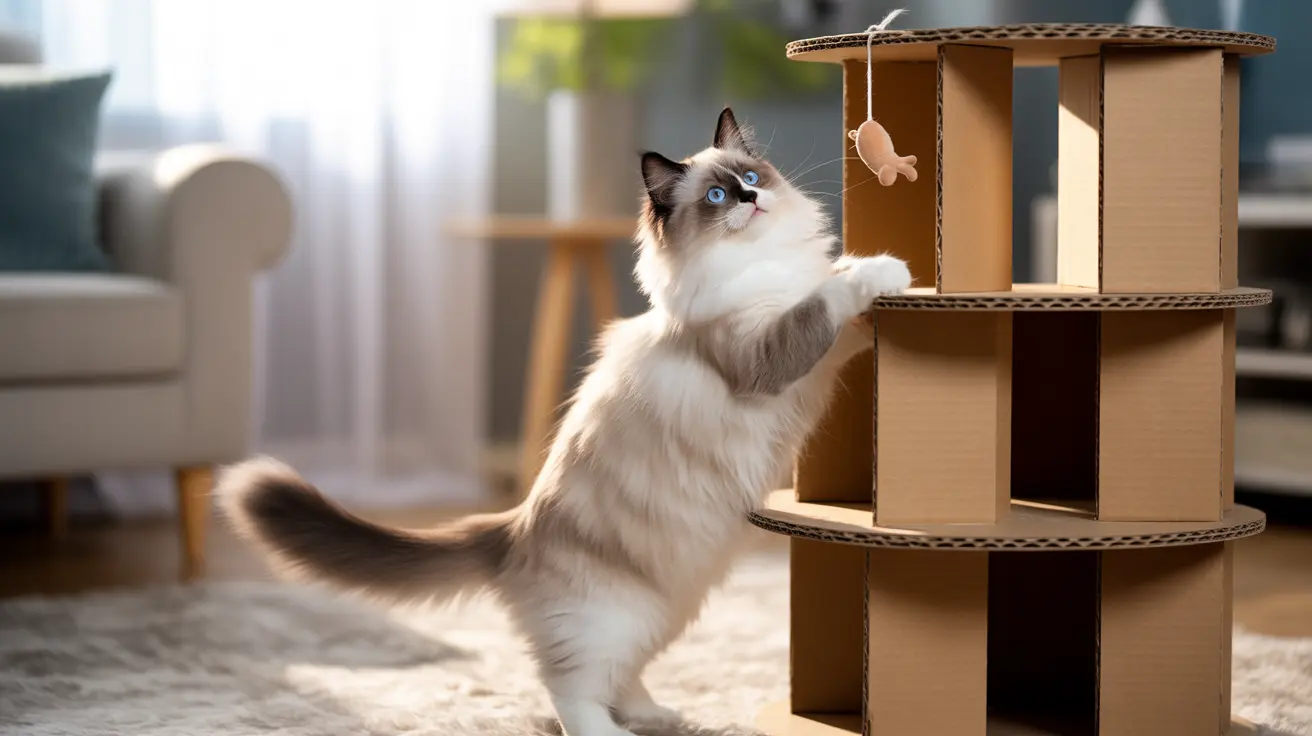Creating a DIY cardboard cat tree is an eco-friendly and budget-conscious way to provide your feline friend with an engaging play space. Not only does this project help reduce waste by repurposing cardboard, but it also allows you to customize the perfect climbing structure for your cat's specific needs and preferences.
In this comprehensive guide, we'll walk you through everything you need to know about constructing a durable, safe, and entertaining cardboard cat tree that your pet will love. From selecting materials to adding custom features, we've got you covered with expert tips and practical advice.
Essential Materials and Tools Needed
Before starting your DIY cardboard cat tree project, gather these essential items:
- Strong cardboard boxes and tubes
- Non-toxic glue or hot glue gun
- Heavy-duty scissors or box cutter
- Measuring tape and marker
- Duct tape for reinforcement
- Felt or carpet scraps
- Sisal rope for scratching areas
- Non-toxic paint (optional)
- Basic tools (ruler, pencil)
Planning Your Cat Tree Design
A successful cardboard cat tree starts with thoughtful planning. Consider your available space, your cat's size, and their favorite activities. Sketch out your design, keeping in mind that most cats enjoy:
- Multiple levels for climbing
- Cozy hideaways
- Scratching posts
- Observation perches
- Interactive elements
Building the Base Structure
Start with a solid foundation to ensure stability:
- Choose a large, sturdy box for the base
- Reinforce corners with additional cardboard
- Add weight to the bottom if needed
- Create a wide, stable platform
- Consider adding non-slip feet
Adding Levels and Features
Build upward from your base, incorporating various elements:
- Platforms at different heights
- Connecting tunnels
- Scratching posts made from tightly rolled cardboard
- Window cutouts for exploration
- Cozy sleeping nooks
Safety and Durability Tips
Ensure your creation remains safe and long-lasting:
- Round all sharp edges
- Double-reinforce weight-bearing areas
- Use non-toxic materials throughout
- Check stability before allowing use
- Regularly inspect for wear and tear
Customization and Enrichment
Make your cat tree more engaging with these additions:
- Hanging toys or bells
- Removable fabric cushions
- Catnip-infused areas
- Multiple entry/exit points
- Replaceable scratching surfaces
Frequently Asked Questions
How do I build a sturdy and safe DIY cardboard cat tree for my cat?
Focus on creating a solid base, using multiple layers of cardboard for support, and reinforcing all weight-bearing areas. Always round edges and ensure all materials used are pet-safe.
What materials and tools do I need to make an eco-friendly cardboard cat tree at home?
Essential materials include sturdy cardboard boxes, non-toxic glue, scissors or box cutters, measuring tools, duct tape, felt or carpet scraps, and sisal rope for scratching areas.
How can I customize a cardboard cat tree to suit my cat's preferences and home décor?
Observe your cat's favorite activities and incorporate those elements into your design. Add personal touches with pet-safe paint, fabric covers, or decorative elements that match your home's style.
What are the best ways to make a DIY cardboard cat tree durable and safe for active cats?
Use multiple layers of cardboard for strength, reinforce joints and corners, create a wide base for stability, and regularly check for wear and tear. Replace damaged sections promptly.
How does a cardboard cat tree benefit my cat's health and behavior compared to store-bought options?
DIY cardboard cat trees provide exercise, mental stimulation, and territory marking opportunities. They can be customized to your cat's specific needs and preferences, potentially encouraging more active use than generic store-bought options.
Conclusion
Building a DIY cardboard cat tree is a rewarding project that benefits both you and your feline friend. By following these guidelines and safety considerations, you can create a unique, eco-friendly piece of cat furniture that provides hours of entertainment and enrichment for your pet.
Remember to monitor your creation for wear and tear, replacing sections as needed to maintain safety and functionality. With proper care and maintenance, your DIY cardboard cat tree can provide months of enjoyment while saving money and reducing environmental impact.






